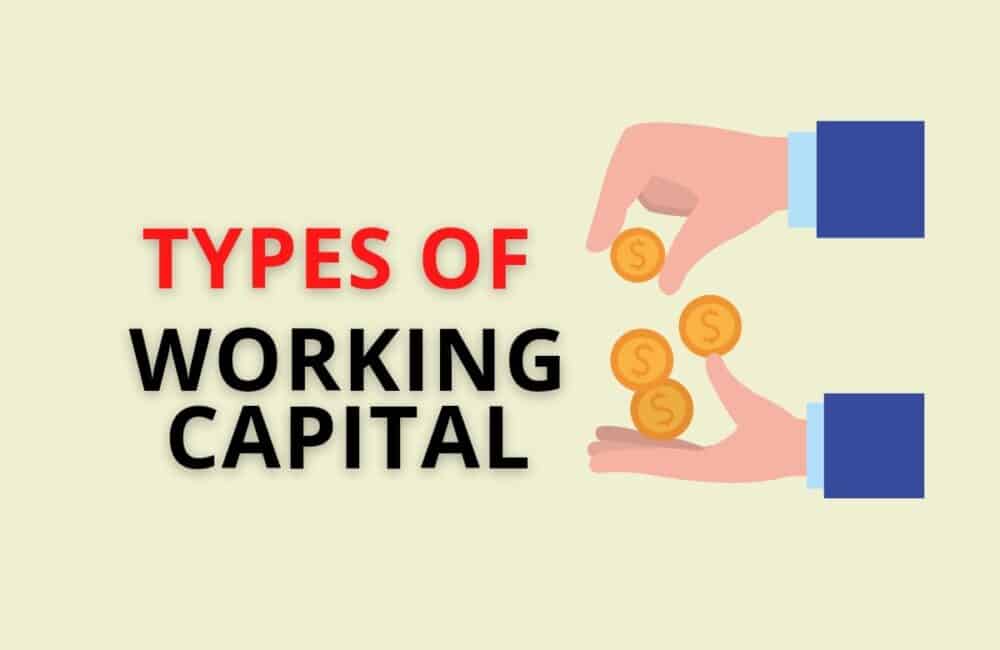Working capital! You can find this term in company accounts.
What Is Working Capital?
Working capital means the difference between the current liabilities and assets. When you remove liabilities from assets there will be the difference amount that is used in day-to-day companies operations and working capital is also called net working capital.
This working capital indicates companies’ short-term sustainability and liquidity.
The formula for working capital:
{Working capital = Current assets – Current liabilities.}
Now let us see some examples of working capital’s current assets and current liabilities.
Current liabilities include bills payable, sales tax, interest payable, bank account overdrafts, etc.
Current assets include cash, accounts receivable, customers’ unpaid bills, etc.
So these are some basics about working capital or net working capital. We hope now you have a good command of the basics of working capital. Now let’s get into depth and discuss different types of working capital available.
Types Of Working Capital
There are four types of working capital based on the following topics.
- Based on the balance sheet view
- Based on the operating cycle view
Based On The Balance Sheet View
Gross Working Capital
In working capital, current assets will be considered as gross working capital. Current assets are short-term assets that can be converted into cash within one year. Gross working capital includes accounts receivable, inventory, short-term investments, and marketable securities.
In simple terms, we can also say that gross working capital is also one of a company’s current assets. Companies consider using gross working capital less because it’s not so useful to calculate the clear value of a company’s liquidity. So this is all about gross working capital.
Net Working Capital
Net working capital is easy to understand. Net working capital is the result of the subtraction of current liabilities from current assets.
To make it easy to understand for you, if a company manufactures a product. After a successful launch just assume they got 100k in sales then that’s not called net profit, it’s called gross profit.
From that, after subtracting all the investments and operating costs the final amount will be net profit or a net loss. In the same way after removing all the current liabilities from current assets finally, net working capital is obtained. So this is all about networking capital.
Recommended: Top 10 Active Venture Capital Firms In India
Based On The Operating Cycle View
Permanent Working Capital
The permanent working capital is also called fixed working capital. Companies want to remain consistent year to year. So companies put permanent working capital which helps businesses to cover all the current liabilities and have consultancy in operating business.
This working capital is fixed according to business size and also permanent working capital is fixed based upon the value of current assets and current liabilities. If you have more liabilities then the permanent working capital will increase because of an increase in debt and expenditure.
As the name suggests the permanent working capital won’t be permanent. Like your business, the permanent working capital will keep on changing so it’s the best idea to measure permanent working capital regularly as the business grows in the long run. So this is all about permanent working capital or fixed working capital.
Temporary / Variable Working Capital
Temporary working capital is used by some
Temporary working capital is an easy term that everyone can understand. Temporary working capital is also the difference between net working capital and permanent working capital. The temporary working capital is not predictable.
This working capital is considered according to the seasonal demand, suppose there is a cold drink production company. Summer is the best season to market and gets a huge number of sales compared to other seasons.
So in this scenario companies will opt for temporary/variable working capital and use this opportunity to infuse additional working capital into the business which results in more production and increased revenue which leads to more profits.
Now let’s see how we can calculate temporary working capital and it’s the formula.
Temporary Working Capital = Net Working Capital – Permanent Working Capital.
And finally, temporary working capital is also called fluctuating working capital. Based on a fluctuation. Temporary working capital is divided into two types: seasonal working capital and special working capital.
Seasonal fluctuations are caused for example cold drinks in summer, hot soups in winter, popcorn in winter, etc.
Special working capital is caused when there is a sudden change in government norms and policies.
So this is all about temporary/variable working capital in different types of working capital.
Final Thoughts
This is the end of the article. We tried our best to serve you an in-depth analyzed article. If you still have any doubt regarding working capital then please don’t mind asking or reaching us so that we will go through your queries and solve them.
We hope you enjoyed the article and you got a perfect insight about working capital, if you gained knowledge from us then please do spread a word about us with the people who want to know about these kinds of topics.
Recommended:
How not to Lose Money in Stock Market?



